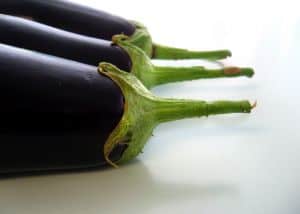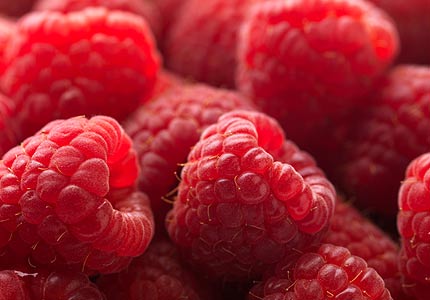10 Fit Foods for Fall
By Joe Wilkes
- Apples. An apple a day can keep the doctor away in more ways than one. Studies have shown that the nutrients found in apples can help lower cholesterol, manage diabetes, and prevent several diseases, including cancer, Alzheimer's disease, osteoporosis, and asthma. Make sure you don't peel the apple though, because the peel contains quercetin, an antioxidant shown in a Finnish study to help reduce the risk of heart disease and inhibit tumor growth. Additionally, apple skin contains insoluble fiber, and the fruit's flesh contains pectin, a soluble fiber. While apples are great on their own, they're also yummy and crunchy when added to salads, and sweet and tasty when baked in desserts.
- Corn. Generally, our society eats way too much corn. It's in almost every food we eat, especially in its most nefarious form—high fructose corn syrup. It's easily America's number-one crop. But fall is the time when we get the harvest of the tastiest sweet corn. Besides being delicious, in its unprocessed state it's actually quite healthy. A food study at Cornell University showed that ferulic acid, an antioxidant produced when sweet corn is cooked, can also be helpful in fighting heart disease and cancer. Plus corn is a good source of vitamins B1, B5, and C; folate; and fiber. Besides eating it on the cob, try corn in salads or as a colorful, crunchy addition to salsa.
- Cucumbers. Some people never see cucumbers until they've been pickled, sliced, and added to two all-beef patties and a sesame seed bun. However, in their fresh, unpickled state, cucumbers are very low in calories (just 4 calories per ounce), are a natural diuretic, and are thought to help in the prevention of pancreatic, liver, and kidney diseases. Cucumbers also contain potassium, which helps regulate blood pressure. Their skin contains silica, which helps strengthen the body's connective tissue. And cucumbers aren't just for eating; the juice makes a great skin lotion. Those spa ladies with cucumber slices on their eyes aren't doing it for nothing. Cucumber juice reduces swelling, and not just for under-eye bags—also for burns and skin disorders. One tasty way to enjoy cucumbers is my Russian grandmother's simple recipe of thinly sliced cucumbers, thinly sliced onion, low-fat yogurt, and chopped dill. (She actually used sour cream, too, but we won't go there.)
- Eggplant. Eggplant contains lots of vitamins, minerals, and fiber, and also high levels of antioxidants, including nasunin, which has been shown to help protect cells from free radical damage. Eggplant also contains terpenes, which are believed to help lower cholesterol. Eggplant is a very versatile ingredient in all kinds of cooking, including Italian, Indian, and Chinese dishes. It can be baked, stewed, or sautéed, among other cooking methods. One thing to watch out for is that
 the flesh of the eggplant is highly absorptive, so if you fry it in oil, it'll soak it all up. One helpful technique is to lightly salt sliced eggplant, let it sit for a half hour, and rinse the salt off before cooking it. This will cause the cell structure of the eggplant to contract, making it a little less spongy. My mom's been dealing with a bumper crop of eggplant from her backyard garden and has been putting eggplant in everything. A recent success was replacing the pasta in her favorite lasagna recipe with thinly sliced eggplant. It absorbed the tomato sauce instead of the oil and made the dish richer and creamier.
the flesh of the eggplant is highly absorptive, so if you fry it in oil, it'll soak it all up. One helpful technique is to lightly salt sliced eggplant, let it sit for a half hour, and rinse the salt off before cooking it. This will cause the cell structure of the eggplant to contract, making it a little less spongy. My mom's been dealing with a bumper crop of eggplant from her backyard garden and has been putting eggplant in everything. A recent success was replacing the pasta in her favorite lasagna recipe with thinly sliced eggplant. It absorbed the tomato sauce instead of the oil and made the dish richer and creamier. - Grapes. There's been much written about the benefits of wine, but you don't have to get loaded to get the benefits of grapes. In their unfermented state, they're a great source of vitamins A, B6, and C; folate; potassium; calcium; magnesium; zinc; and fiber. Like apples, they contain the antioxidant quercitin. They also contain resveratrol, which has been shown to help prevent blood clots and protect arteries from free radical damage. Generally speaking, the darker the grape, the higher the antioxidant levels. Grapes are great snacks that are low in calories. They're great when added to salads, or you can freeze them for a frosty treat.
- Okra. This may be the most intimidating ingredient on this list. Many people are put off by okra's bristly outside and somewhat slimy inside, but it has a lot of health benefits that should make you take a second look. It's full of vitamins, minerals, and fiber. And it has great gastrointestinal benefits. Its high mucilage content, which thickens stews and gumbos, also helps absorb cholesterol, toxins, and bile, and has a gentle laxative effect. Its seeds contain amino acids and protein. Plus it's believed to be good for the skin and hair. (It's been said that Cleopatra ate okra as part of her beauty regimen.) Okra is great in soups and stews, or lightly sautéed as a side dish.
- Pears. This is my favorite fall food. The biggest, juiciest pears start showing up in farmers' markets right about now. Besides being a great source of stains on my shirts, they have high levels of vitamins C and K, copper, and fiber. They contain even more of the soluble fiber pectin than apples, which can play an important part in digestive health and in lowering cholesterol. Pears have also been shown to reduce kidney inflammation and colitis. Asian pears, which are crunchy, like apples, are also in season now and contain the health benefits of both fruits. Pears are great plain, broiled, or poached. Plus Asian pears can be shredded as a healthy addition to a slaw.
- Peppers. Whether you like them spicy or sweet, now is prime pepper-picking time. Fiber-rich peppers have high levels of vitamins A, C, and K; red peppers have the most. Red peppers, like tomatoes, are also good sources of lycopene, which studies show may be linked to cancer prevention. Hot peppers contain capsaicin, which has been shown to help prevent ulcers and lower cholesterol. Plus hot peppers can help ramp up your metabolism. I can't think of many dishes that couldn't be improved with a little peppery zip. Soups, stir-fries, salads . . . I even had some chocolate cayenne ice cream that was pretty good.
- Raspberries. Raspberries are some of the healthiest—but priciest—berries out there. So now, when they're in season, is the most economical time to enjoy them. Raspberries contain several flavonoids called anthocyanins, believed to have antimicrobial properties, which can help prevent fungal and yeast infections and aid with irritable bowel syndrome. A Netherlands study showed that raspberries contain 10 times as many antioxidants as tomatoes. Like apples and pears, they also contain high levels of pectin. While they're great as snacks and desserts, think about trying them in salads too.
- Tomatoes. The big new star of the tomato nutritional profile is lycopene. This carotenoid has increasingly been shown to be a powerful antioxidant that may play a big role in preventing cancer and heart disease. They're also great sources of vitamin C. And for those of you who don't care for raw tomatoes (as George Carlin said, they look like they're in the larval stage), tomatoes lose very little of their nutritional value when cooked. So they can be enjoyed stewed, in sauce, and even as ketchup (although we recommend a ketchup free of high fructose corn syrup and low in sodium). This is a prime time to seek out tomatoes at the farmers' market. Especially exotic are the heirloom varieties that come in yellows, greens, purples, browns, and reds. They can make a beautiful multicolored and antioxidant-rich salad.
This is a re-post courtesy of: BeachBody.com


No comments:
Post a Comment